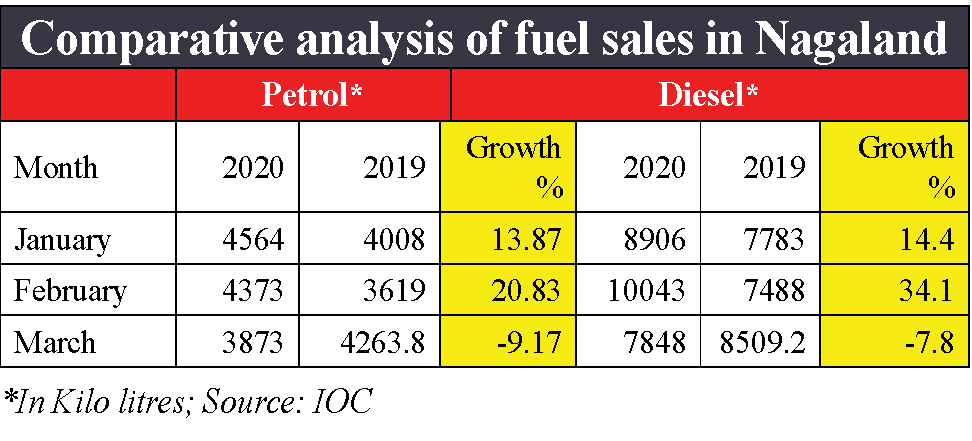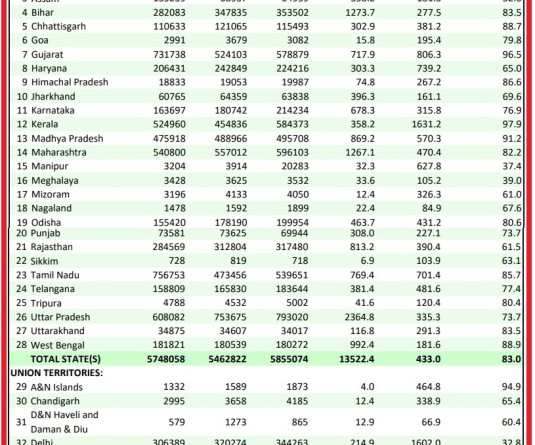Nagaland Govt imposes COVID-19 Cess on oil

8.4 percent fall in fuel sales in Nagaland
Morung Express News
Dimapur | April 28
Following on the heels of Assam and Meghalaya, the Nagaland state government has also decided to hike oil prices. The Additional Chief Secretary & Finance Commissioner Sentiyanger Imchen issued a notification stating that COVID-19 Cess will be levied on Diesel, Petrol and other motor spirit, in addition to existing rate of tax and cess.
It stated that a COVID-19 Cess of Rs 5 per litre will be levied on diesel while Rs 6 per litre on Petrol and other motor spirit. The notification which has been issued in exercise of subsection 3 of section 3A of the Nagaland (Sales of Petroleum and Petroleum Products including Motor Spirit and Lubricants) Taxation Act, 1967 (as amended), will come into force with effect from April 28 midnight.
Cess is a form of tax charged/levied over and above the base tax liability, and usually imposed additionally when the state or the central government looks to raise funds for specific purposes.
Fuel sales dips
Meanwhile, Nagaland has witnessed a sharp dip in fuel sale over the past 30-40 days. According to data gathered by The Morung Express from the Indian Oil Corporation, sale of petrol and diesel fell by 8.48 percent in the month of March.
“Till the 20th of March, sale was witnessing positive growth and then it fell after the lockdown. In fact, there was a sharp fall in the last 10 days of March and continuing,” said an IOC official in Dimapur.
The IOC controls around 60 percent of the oil market in Nagaland and the rest is covered by the Hindustan Petroleum, Bharat Petroleum, Essar and Reliance, which has one outlet in Dimapur.
Before the COVID-19 alarm was sounded, the official said that the oil sale here was steadily growing. The IOC sales in 2019 grew by about 13-14 percent, he added.
In January 2020, there was a growth of about 14 percent, which translated into 4564 kilo litres (KL) for petrol and 8906 KL for diesel as compared to 4008 KL of petrol and 7783 KL of diesel in January 2019.
In February, there was a growth of over 27 percent only to fall to minus figures in March. The negative growth was attributed to the last week of March when the lockdown started. (See table)
“For April 2020, negative growth of about 75% in Petrol and 70% in Diesel against last year is expected,” said the official.
He added that fuel consumption over the past month has largely been by the government sector to run essential services.




